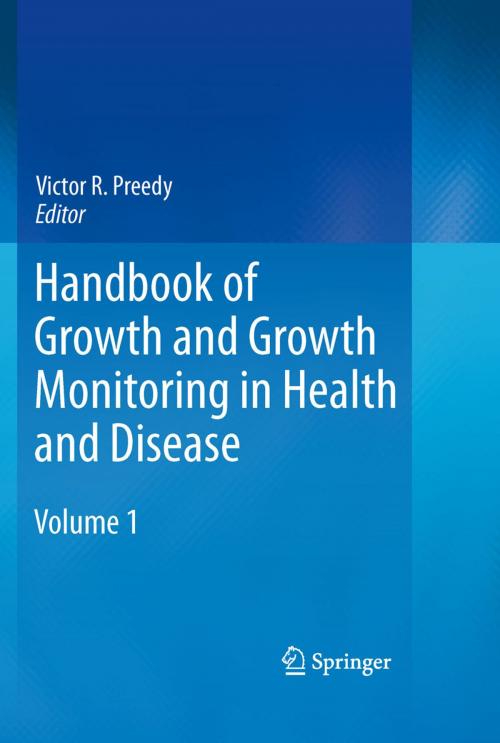Handbook of Growth and Growth Monitoring in Health and Disease
Nonfiction, Health & Well Being, Medical, Nursing, Maternity, Prenatal, & Women&, Patient Care, Nutrition| Author: | ISBN: | 9781441917959 | |
| Publisher: | Springer New York | Publication: | December 3, 2011 |
| Imprint: | Springer | Language: | English |
| Author: | |
| ISBN: | 9781441917959 |
| Publisher: | Springer New York |
| Publication: | December 3, 2011 |
| Imprint: | Springer |
| Language: | English |
Growth is one of the human body’s most intricate processes: each body part or region has its own unique growth patterns. Yet at the individual and population levels, growth patterns are sensitive to adverse conditions, genetic predispositions, and environmental changes. And despite the body’s capacity to compensate for these developmental setbacks, the effects may be far-reaching, even life-long. The Handbook of Growth and Growth Monitoring in Health and Disease brings this significant and complex field together in one comprehensive volume: impact of adverse variables on growth patterns; issues at different stages of prenatal development, childhood, and adolescence; aspects of catch-up growth, endocrine regulation, and sexual maturation; screening and assessment methods; and international perspectives. Tables and diagrams, applications to other areas of health and disease, and summary points help make the information easier to retain. Together, these 140 self-contained chapters in 15 sections [ok?] cover every area of human growth, including: Intrauterine growth retardation. Postnatal growth in normal and abnormal situations. Cells and growth of tissues. Sensory growth and development. Effects of disease on growth. Methods and standards for assessment of growth, and more. The Handbook of Growth and Growth Monitoring in Health and Disease is an invaluable addition to the reference libraries of a wide range of health professionals, among them health scientists, physicians, physiologists, nutritionists, dieticians, nurses, public health researchers, epidemiologists, exercise physiologists, and physical therapists. It is also useful to college-level students and faculty in the health disciplines, and to policymakers and health economists.
Growth is one of the human body’s most intricate processes: each body part or region has its own unique growth patterns. Yet at the individual and population levels, growth patterns are sensitive to adverse conditions, genetic predispositions, and environmental changes. And despite the body’s capacity to compensate for these developmental setbacks, the effects may be far-reaching, even life-long. The Handbook of Growth and Growth Monitoring in Health and Disease brings this significant and complex field together in one comprehensive volume: impact of adverse variables on growth patterns; issues at different stages of prenatal development, childhood, and adolescence; aspects of catch-up growth, endocrine regulation, and sexual maturation; screening and assessment methods; and international perspectives. Tables and diagrams, applications to other areas of health and disease, and summary points help make the information easier to retain. Together, these 140 self-contained chapters in 15 sections [ok?] cover every area of human growth, including: Intrauterine growth retardation. Postnatal growth in normal and abnormal situations. Cells and growth of tissues. Sensory growth and development. Effects of disease on growth. Methods and standards for assessment of growth, and more. The Handbook of Growth and Growth Monitoring in Health and Disease is an invaluable addition to the reference libraries of a wide range of health professionals, among them health scientists, physicians, physiologists, nutritionists, dieticians, nurses, public health researchers, epidemiologists, exercise physiologists, and physical therapists. It is also useful to college-level students and faculty in the health disciplines, and to policymakers and health economists.















